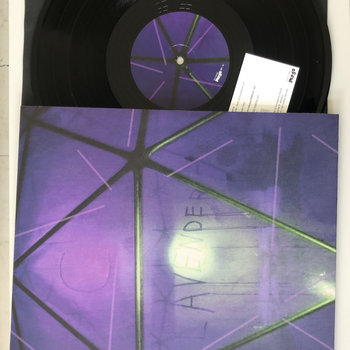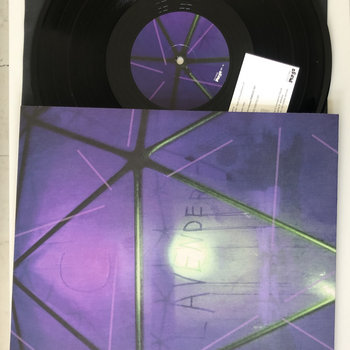
“All the track titles on Myth of Equilibrium are about white blood cells engulfing and destroying illnesses in our body,” says C. Lavender, “and our body trying to be healthy.” Wellness is important to Lavender: she’s a certified sound healer. In her world, music and health overlap. On Myth of Equilibrium, Lavender creates new environments with recording techniques designed to envelop the listener; with the right mindset, the album can provide some sound healing of its own.






Vinyl LP




Lavender discovered sound healing with the help of legendary composer, academic, and musician Pauline Oliveros. After studying art therapy and psychology at St. Thomas Aquinas College, Lavender became Oliveros’s assistant and student, learning many lessons in the functionality of sound along the way. “I started wondering if I could use the things I was learning from her in another way,” she says, “another field outside of performing music or my own personal meditations,” which paved the way for her interest and work in sound healing.
Sound healing revolves around the palliative use of vibrational instruments—gongs, singing bowls, tuning forks, even digital audio—to provide relief from a host of conditions, ranging from writer’s block to cancer. It changes depending on the patient and the session, and is tailored to specific needs and desires. “Sometimes, I play instruments around the person; other times, I place singing bowls on the body or use tuning forks directly on the body.”

Myth of Equilibrium is a contemplation on the difficulty of maintaining a healthy mental and physical state. “There’s always something tugging at us,” Lavender says, “whether it’s our health or stresses. It’s hard to find peace at any given time.” Every day external and internal factors slowly decay the body, and our cells fight that—aging, breathing pollution, consuming carcinogens, the list goes on. Physical and mental maintenance is a Sisyphean endeavor, one that evolves over time. The things you might do to stay active at 20 may look completely different than those at 50. “It’s a lifelong process,” she says, “it’s something we’re constantly working, playing catch up.”
Myth of Equilibrium was recorded in a geodesic dome, using binaural microphones to simulate the way sound is naturally experienced in human ears. The technique gives the album a deep sense of space. “I set up the binaural mics on the sides of a music stand,” she explains, “slightly offset from the middle of the dome, and then moved around the space so each side of the microphone would pick it up differently.” This is especially apparent on the title track, in the sound of a consistent aching gong and panning metallic twangs. The motion is constant and enthralling—listening through laptop speakers does the music a disservice. The layers of hisses and cracks are most effective when the listener can hear them traveling back and forth.
Lavender’s previous work was often heavy on synths; Myth of Equilibrium has some, too, but like the rest of the album, the stems are made to move. Songs like “Remedy Potion Extraction” and “Embrace the Call” both feature prominent atmospheric, texturally-rich synthesizer parts alongside other more percussive elements like clatters, even, on “Embrace the Call,” a crow call. The choice to include drawn out synth notes are as close to classic songwriting as Lavender is willing to go. Instead, she creates functional, accessible environments where the listener can exist in solitude for a few moments.
This is where Myth of Equilibrium and sound healing overlap: They transport. They transmute. Myth of Equilibrium’s sense of motion and space can be a powerful vehicle, designed to be operated with closed eyes and an open mind. One minute, you’re lying in bed; the next you’ve drifted off—you’re in the dome, and Lavender is guiding you.







